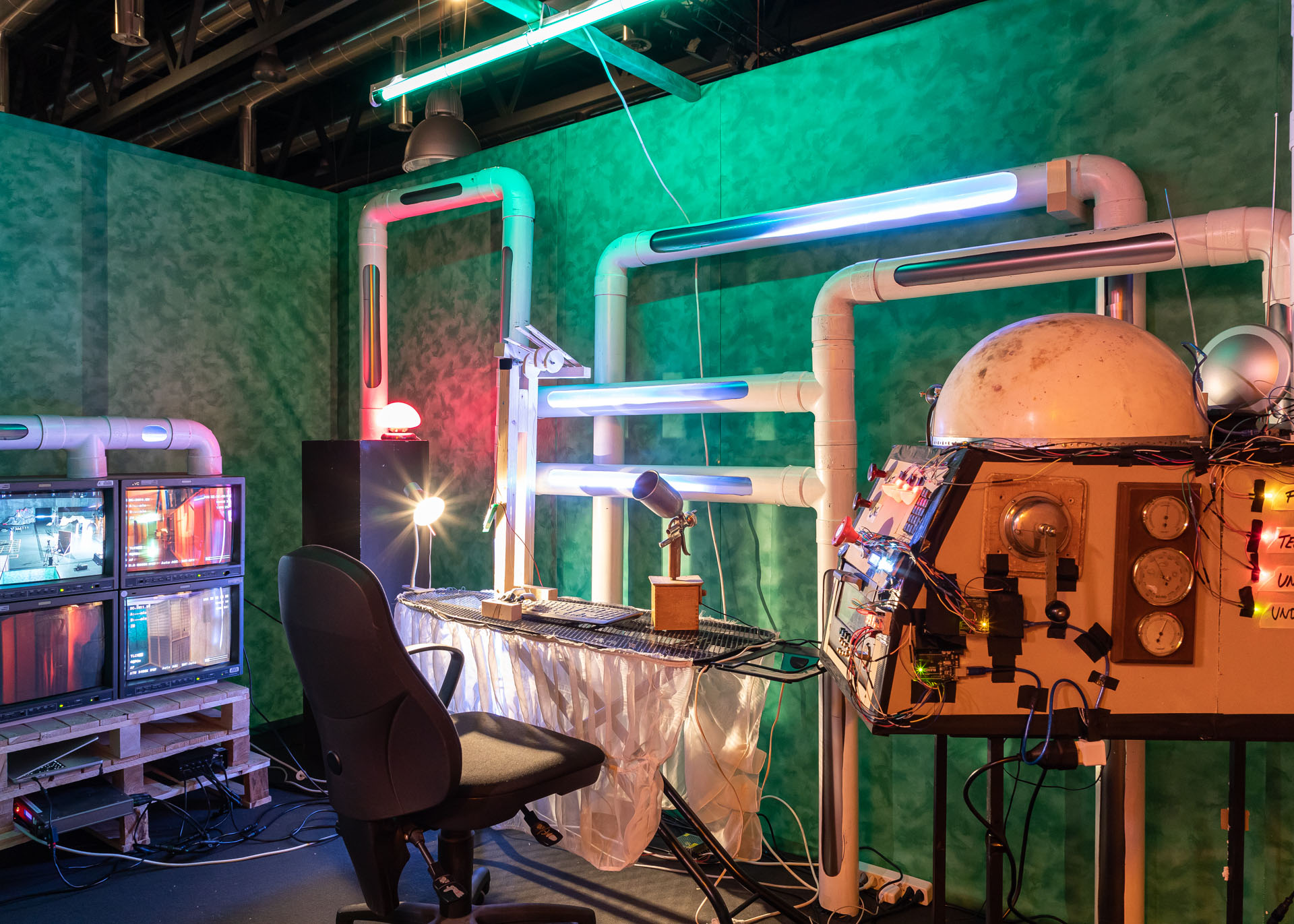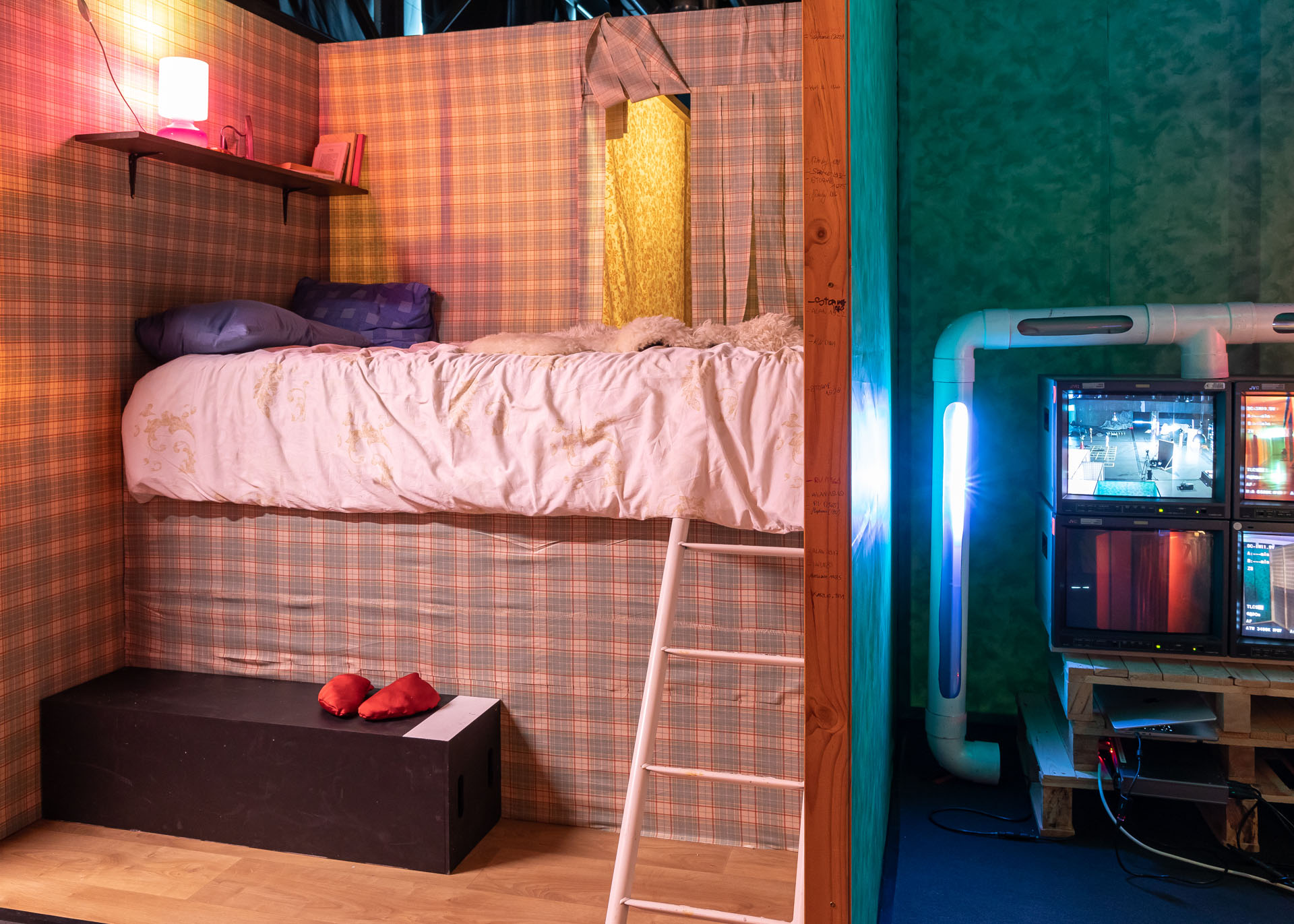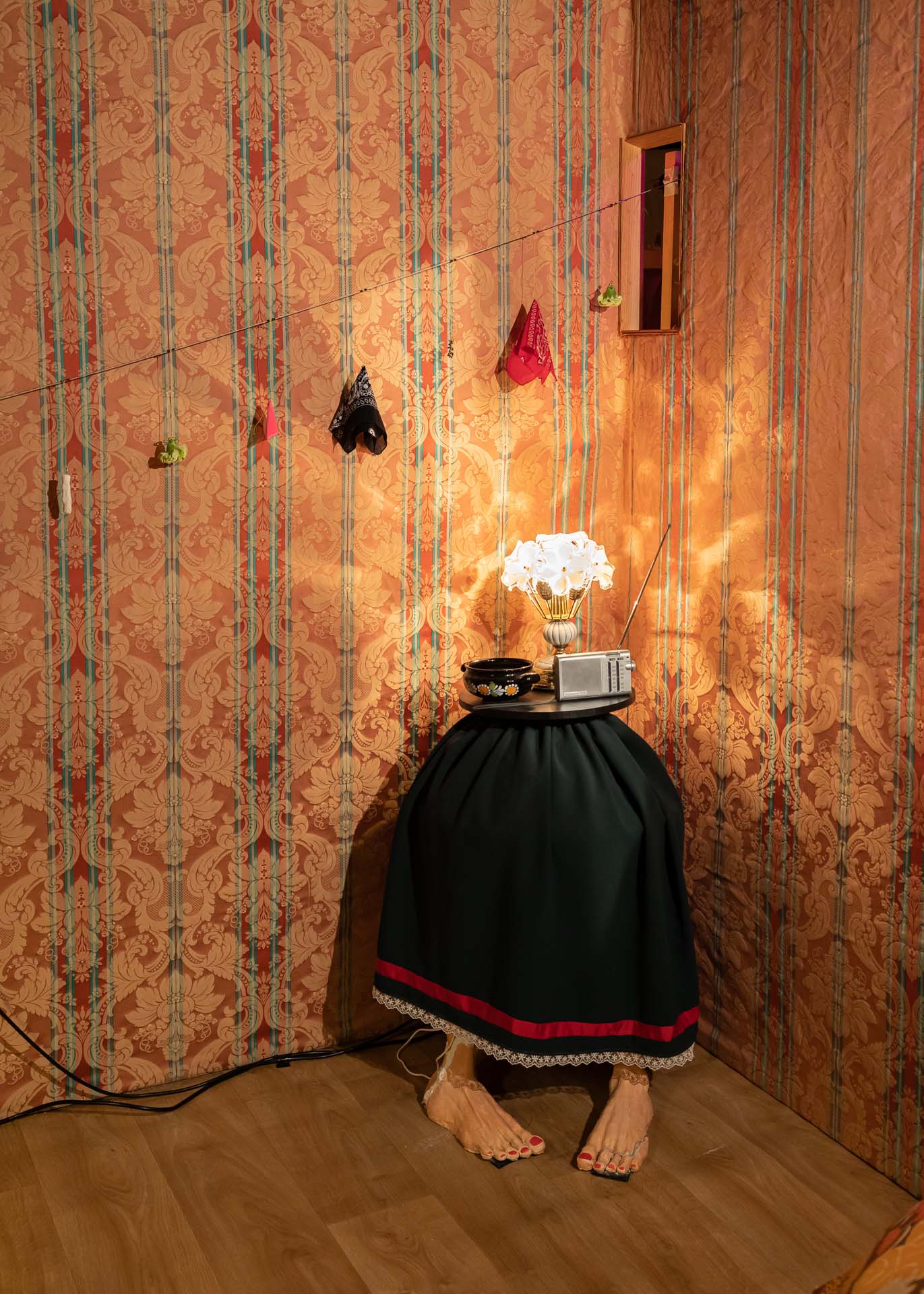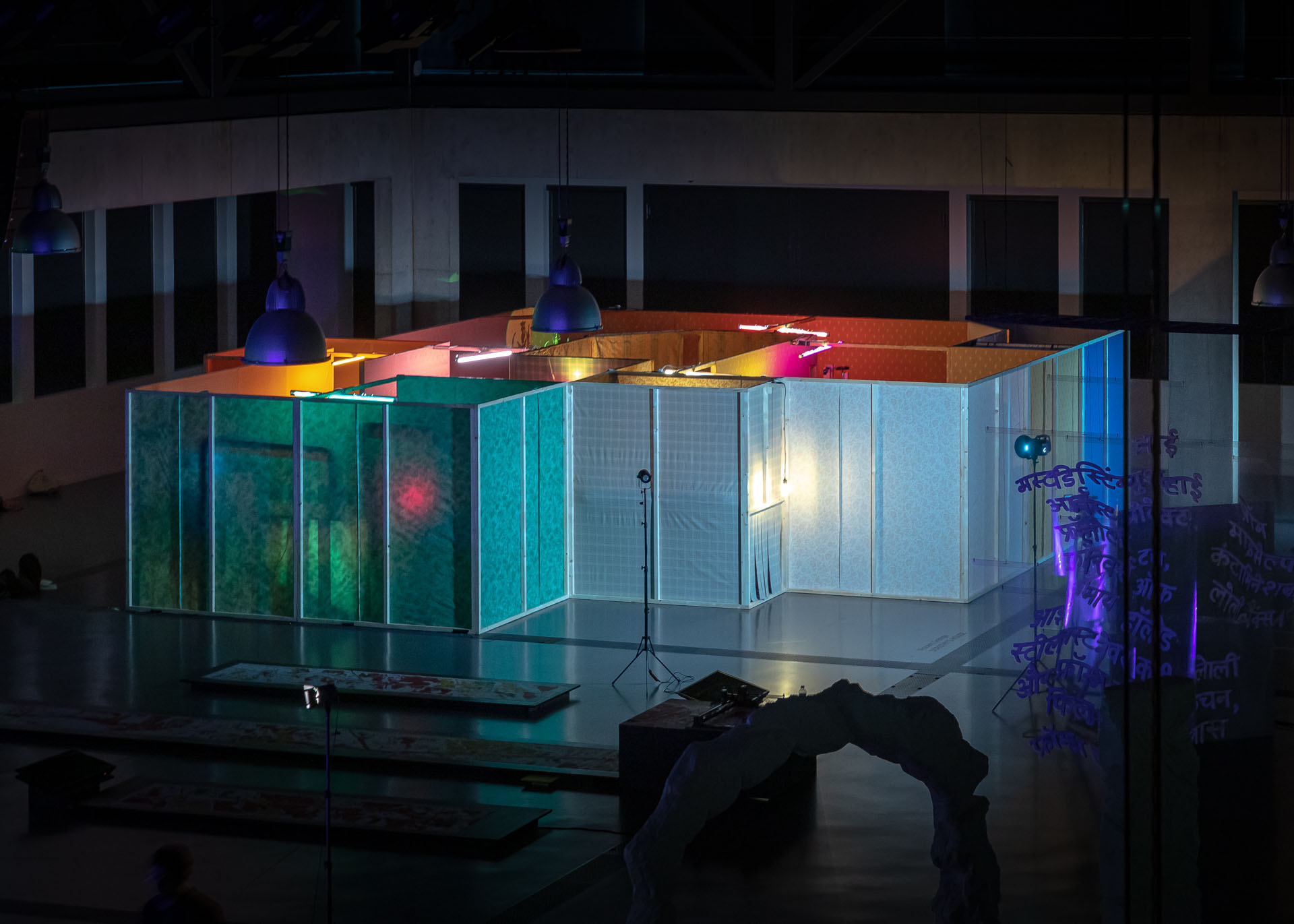Vincent Grange - About
Dorothy’s Interior Boulevard (2025)
Dorothy’s Closet - v3 (2024)
Dorothy’s Picnic Set (2024)
Dorothy’s Closet - v2 (2024)
Dorothy’s Closet - v1 (2024)
La voisine qui en savait trop (2024)
The House of Dorothy - v2 (2024)
Entre 70 et 75 degrés (2024)
The House of Dorothy - v1 (2023)
Bonnie (2023)
First Encounter (2022)
Maison Sauvage (2022)
KETA1000 (2021)
L’Allégorie de la Caverne (2021)
The House of Dorothy (2023) - HEAD (GE, CH)
This project was first exhibited at the Haute Ecole d’Art et Design of Geneva (HEAD) in 2023. It was then revisited and exhibited at the festival ->Printemps Carougeois 2024 curated by Yaël Ruta. A very special -> drag queen performance by Princesse GenderFuck was organised inside the house for its finissage.

Context
In order to avoid persecution for homosexuality in the United States during the mid 20th century, gay men, and later the LGBTQIA+ community as a whole, introduced themselves as “friends of Dorothy” in order to discreetly communicate their identity, gender or sexual orientation. In the 1980s, the Naval Investigative Service heard about this phenomenon within the US army in Chicago, and led a prolonged and futile investigation to catch Dorothy, hoping she would share the names of all her gay friends in the military.This immersive installation invites the public to embark on a journey through the different rooms and corridors of the House of Dorothy, this most wanted imaginary woman. In addition to condemning this homophobic investigation through a philosophy of absurdity, this project stands as an homage to the many queer spaces around the world and their stories, and intends to highlight the importance of their existence. At the intersection of Queer History and spatial design, the architecture, artifacts, and different machines contribute to the storytelling of the imaginary life of this extraordinary woman.

Architecture
As to pay tribute to those who have had to hide and those who still do, and as most hidden in plain sight queer spaces, The House of Dorothy isn’t easy to find, the flag isn’t hanging from the balcony and no windows seem to indicate what is going on inside – a single bare lightbulb hangs in front of a hidden entrance, hinting at the community that this is a safe space.It requires courage from queer people to go to a queer space for the first time, and sometimes its access might be difficult. Here, visitors must go on four legs to enter the house through a tunnel which pays homage to different “portal” locations described as important queer spaces by the community. Some would hop on a train as a woman and come out in a different city as a man, some used the last subway carriage in Mexico City as a cruising spot, and Vincent has been considering the French border as his queer space for a whole year.
Sadly often inside and even underground, a lot of meeting queer spaces in times of segrega- tion are closed and hidden. This explains why the house is a closed space. It also explains the neon lights he used on the ceiling, a light typically used in basements. The house has many rooms, and tiny hallways, inspired by the labyrinth architecture of gay saunas and their multidirectional serpentine hallways meant to allow unplanned encounters - forcing the openness to unknown eventualities and possibilities.
Vincent took the definition of a queer space of spanish writer and activist Ailo Ribas: « Queer space is simply that which allows us to be in right relationship with change, that which teaches us to move between worlds, to shapeshift, to learn and teach the skills necessary to gestate and conceive our own worlds, [...] » - a definition that reaches every member of the community who has had to transition one way or another at some point, in this heteronormative world. He therefore used the keyword “transition” to shape the different rooms of the house.

Machinery
A Secret Codes Machine transforms rubbish into various shapes, and then colors them, let- ting them dry on a rotating lift: the pink triangle from the WWII camps turned upside down, Oscar Wilde’s green carnations to be worn on a jacket, fingers without nails, various colors bandanas to let protrude out of one’s back pockets, and violets... Various codes used by the community over decades of segregation, to showcase the creativity of LGBTQIA+ people when it comes to getting together in hard times, a vessel for honoring these historical queer expressions. This machine is also a metaphor of the visitors’ journey inside Dorothy’s House – through its difficult entrance and its catwalk exit - this house allows them to come in as something and to come out as something else – whether it is about helping members of the community to transition into what they need or simply make non-members more aware of the importance of queer spaces.To point at the absurdity of the Dorothy investigation by the NIS, Dorothy responds with absurd “traps” she has positioned around the house such as robotic typing fingers in her office, and wigs on chairs to fake her presence in case of a police invasion.
To emphasize the voyeurism surrounding the community, people inside the house now have eyes on people outside. Four screens live stream the exterior of the house and act as a surveillance system to ensure the safety of Dorothy and her guests, and a peephole is positioned above the entrance reachable from Dorothy’s secret bed where she can hide from the police.
To remind the need for queer spaces, in a world where queer people still risk going to prison, physical punishment or even death for being themselves in some countries, a machine in Dorothy’s office can teleport the house to where it is needed and send its new location to queer people - again, an absurd solution to an absurd problem.


Family Aesthetic
Researchers imply that the “friends of Dorothy” secret code was firstly used in the 1950s. While some people argue that the origin of the name is coming from Dorothy Parker, the majority thinks it comes from the character of gay icon Judy Garland in the 1939 movie “The Wizard of Oz” – in which she makes friends with people who are peculiar and different. Judy Garland who would be 100 years old today, and the over 70 years old “Friend of Dorothy” expression quickly gave the house this grandmo- ther’s apartment aesthetic, even though the time period gets blurry with some modern artefacts posi- tionned here and there, to remind that this problem isn’t a thing of the past.It also takes us back to the New York ballroom scene in which most participants belong to groups known as “houses” – sorts of chosen families lead by a “mother” or a “father” typically drag queens, gay men or transgender women who provide ballroom guidance to their “children” – often estranged by their given family. We can see on the exit wall traces from dozens of LGBTQIA+ activists and icons who grew up with their common imaginary friend, or Grandmother, Dorothy.
Materials
Architecture includes wood (4x4cm pine wood), tapestry, black and wood carpet rolls, MDF pannels for the tunnel. Lights include vintage lamps, colored neons, MadMapper LEDS in transluscent tubes. The secret code machine is made out of 3 motors, 3D printed pieces, tomato sauce aluminum cans, upcycled wood, cardboard and fabrics, and trash of other classmates’ projects. The teleporting machine is made out of a pizza oven, a safety buoy, Arduino components, an enema pear, a coffee grinder, calculators, ... The office includes 4 screens that live stream footage of 4 cameras positionned around the house.The flooring and tapestry were upcycled, all of it was about to be thrown away. All ready-made objects come from the streets, the fleamarket or Vincent’s family’s basement.



PRESS:
Tribune de Genève: La «Maison de Dorothy» fait une ode aux espaces queer (Irène Languin) Magazine 360: Are you a friend of Dorothy ? (Arnaud Gallay)
L’Agenda queer 360: La Maison de Dorothy
Special thanks to:
Maude Renevier
Guillaume Paschoud
Hsuan Lee
Chirine Samii
Adèle Guillebaut
Hannah Mackaness
Joseph Curle
Tanguy Troubat
Dominic Robson
Rosario Hurtado
Roberto Feo
Arno Mathies
Eloïse Vo
Margaux Janin
All the queer people who accepted to answer my questions
Histoire Sans Chutes
My grandparents
My parents
Photos © Raphaelle Müller - HEAD Genève